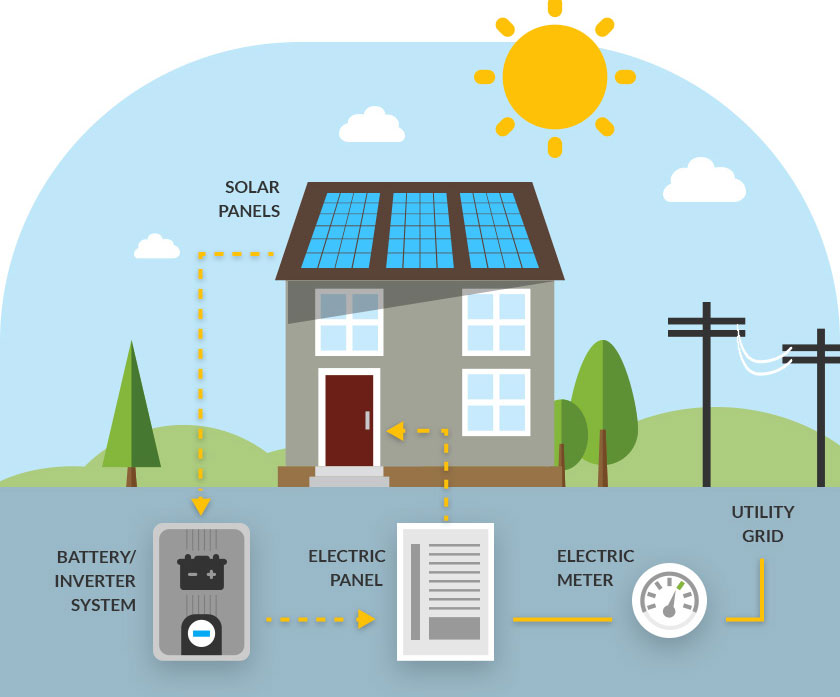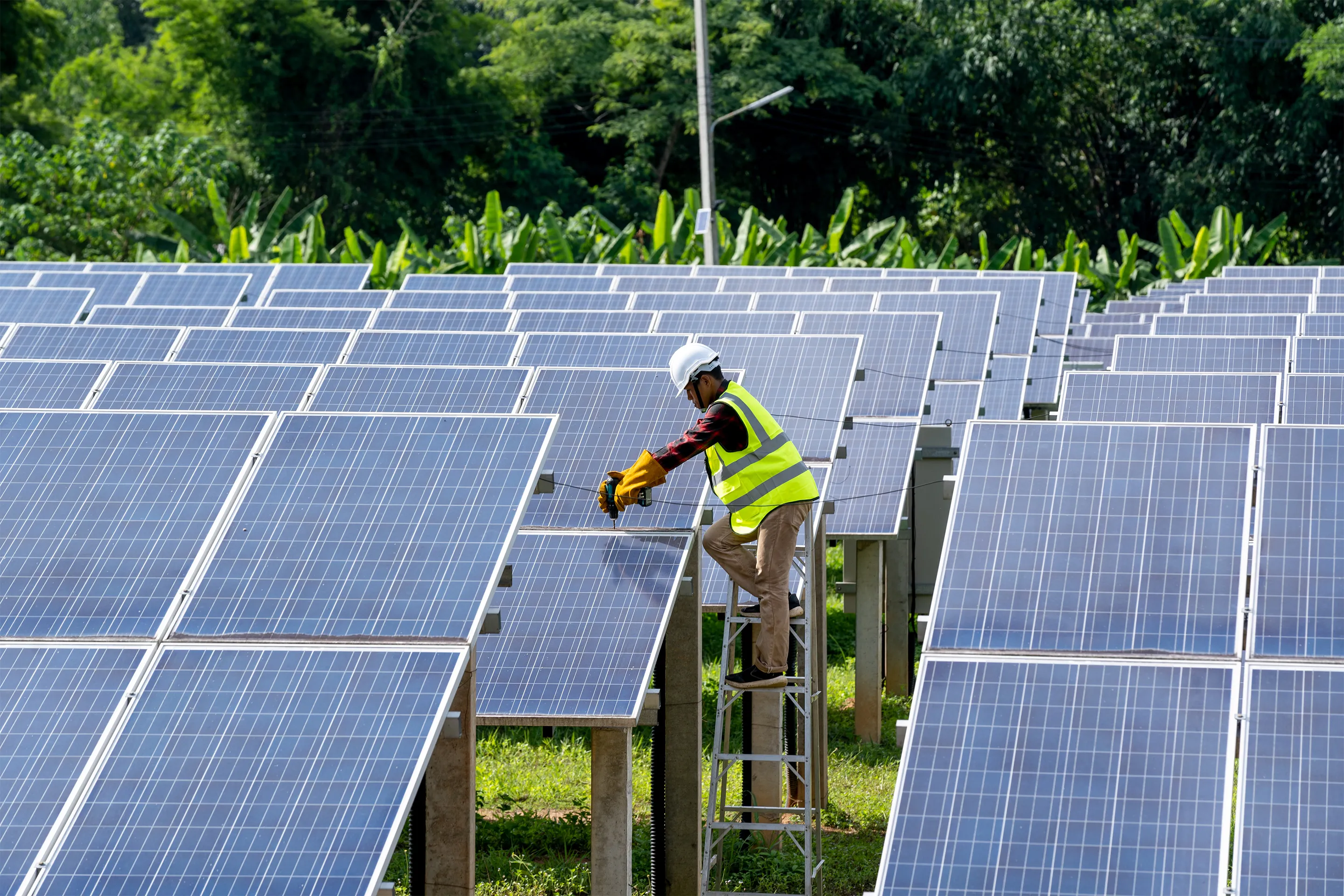Solar Panel Company Virginia Things To Know Before You Buy
Solar Panel Company Virginia Things To Know Before You Buy
Blog Article
Virginia Solar Providers: Lumina Solar Specializes In Providing Advanced Photovoltaic Solutions For Houses And Organizations
History and Founding
Have you ever questioned how a solar panel company springs from a simple trigger of inspiration into a powerhouse of renewable energy? It frequently starts with a vision-- one sustained by a blend of development, determination, and a pinch of serendipity. The journey of many solar companies mirrors the development of the technology itself: from large, inefficient panels to streamlined, high-efficiency marvels utilizing the sun's bounty.
The Early Days
In the late 20th century, when solar power was still a niche principle, leaders planted seeds for what would become an international motion. Envision a little workshop filled with curious engineers, tirelessly exploring with photovoltaic cells. Their enthusiasm was palpable, frequently driven by a desire to fight environment modification and minimize dependence on fossil fuels.
One such anecdote is about a founder who, inspired by an outdoor camping journey, understood that even in remote locations, the sun might power vital devices. This easy observation stimulated a business's objective to equalize access to tidy energy.
Establishing Principles

- Development: Constantly pushing the limits of solar technology to enhance performance and sturdiness.
- Sustainability: Dedicating to environment-friendly manufacturing and minimizing carbon footprints.
- Availability: Making renewable resource solutions budget friendly and practical for everyday users.
Turning points in Development
| Year | Key Event |
|---|---|
| 1985 | Business established in a small garage, focusing on research study and advancement. |
| 1995 | Business solar panel product released, getting regional attention. |
| 2005 | Expanded to worldwide markets, welcoming global renewable resource goals. |
| 2015 | Introduced advanced photovoltaic panel technology with improved energy conversion. |
Isn't it interesting how these incremental actions, frequently neglected, shape the energy landscape today? The photovoltaic panel business story is not simply about technology; it has to do with a relentless mission for a brighter, cleaner future.

Developments in Photovoltaic Panel Technologies
Ever noticed how some photovoltaic panels gleam brighter and last longer? It's not magic; it's the science of photovoltaic performance. Modern solar panel companies invest greatly in innovations like bifacial cells, which capture sunshine from both sides, boosting energy harvest without broadening roofing system area. Have you ever questioned why some panels carry out better on cloudy days? That's due to advances in thin-film solar innovation, which prospers under diffused light conditions.
Item Variations Customized to Unique Requirements
One size never fits all. Solar panel suppliers now provide:
- Monocrystalline panels for optimum performance and smooth aesthetic appeals, suitable for space-constrained rooftops.
- Polycrystalline panels, which offer a cost-effective alternative without sacrificing excessive output.
- Building-integrated photovoltaics (BIPV), combining solar tech seamlessly into architectural aspects like windows and facades.
Selecting the right item isn't almost in advance cost; it has to do with matching your environment, energy objectives, and long-lasting savings. For instance, homes shaded by trees need panels that master low-light scenarios, something lots of overlook up until energy expenses climb all of a sudden.
Technical Tips for Optimum Choice
- Assess the temperature level coefficient-- lower values suggest panels lose less efficiency on hot days.
- Try to find panels with improved anti-reflective coatings to optimize light absorption.
- Think about the panel's guarantee not just for problems, however for guaranteed power output over decades.
- Don't undervalue the importance of the inverter technology paired with the panels; it can make or break your system's performance.
Beyond Panels: Emerging Trends
Envision solar panels more info that adjust their angle instantly to go after the sun-- tracking systems are becoming more accessible, increasing yield substantially. Or solar tiles that mix invisibly into your roofline, transforming your home into a quiet, self-sufficient power generator. These innovations are improving what a photovoltaic panel business offers-- not simply items, but incorporated energy solutions.
Market Presence and Global Operations
Ever question why some solar panel companies seem to grow up in every corner of the world while others barely make a ripple? The distinction lies not just in technology however in mastering the art of navigating varied markets. Expanding internationally is like planting seeds in various environments-- you need to comprehend each environment's unique conditions to prosper.
Take, for example, the elaborate dance of logistics and supply chain management. Delivering panels halfway across the world isn't almost range; it's about timing, custom-mades, tariffs, and adjusting to regional demand changes. A company with robust global operations prepares for these variables, making sure panels arrive on schedule without inflating costs. This foresight is no small task and frequently separates market leaders from followers.
Secret Techniques for Expanding Market Presence
- Localized manufacturing: Establishing production hubs near target markets reduces shipping delays and import complexities.
- Strategic partnerships: Collaborating with regional companies speeds up market penetration and builds trust.
- Adaptive item style: Customizing photovoltaic panel tech to weather, sun intensity, and infrastructure subtleties enhances efficiency and acceptance.
What about the human aspect? Solar panel companies running internationally need to fix up cultural distinctions and regulatory subtleties without forgeting their core mission. What works in a sun-drenched desert might fail in a damp coastal area. In some cases, the most innovative option is just listening-- soaking up regional insights to fine-tune innovation and technique.
Specialists often encourage a phased rollout rather than a shotgun growth. Why run the risk of overextension when determined growth builds sustainable momentum? Scaling sensibly suggests balancing aspiration with functional durability - Solar Panel Company. After all, in the race for sustainable energy dominance, patience can be as important as speed
Environmental Impact and Sustainability Practices
When solar panels initially emerged, many assumed they carried zero environmental luggage. However, the truth is more nuanced. The production of photovoltaic cells involves uncommon earth metals and energy-intensive procedures, which can leave a substantial carbon footprint before the panels even reach rooftops. Yet, the real environmental cost depends heavily on the sustainability practices employed by the solar panel company throughout the lifecycle of their items.
How often do we stop briefly to consider what happens to photovoltaic panels at the end of their helpful life? Unlike batteries or electronic devices, photovoltaic panels can last 25-30 years, however disposal and recycling paths stay underdeveloped in many regions. A business committed to decreasing environmental harm will have a robust prepare for recycling photovoltaic products, restoring valuable silicon, glass, and metals to avoid land fill build-up.
Secret Sustainability Techniques
- Utilizing low-impact manufacturing strategies that minimize water and energy intake.
- Implementing closed-loop systems to recycle production waste back into new panels.
- Participating in transparent supply chain audits to ensure ethical sourcing of raw materials.
- Creating panels for much easier disassembly to help future recycling efforts.
It's worth noting that some solar companies have originated ingenious approaches, such as incorporating biodegradable parts or utilizing less toxic chemicals during fabrication. This not just minimizes environmental strain however also sets a precedent for the industry. The concern remains: can the solar industry really pivot towards a circular economy model without compromising efficiency or cost?
Specialist Tips for Examining Sustainability
- Inquire about the company's commitment to carbon-neutral production and whether they balance out emissions.
- Investigate if they partner with accredited recycling facilities devoted to photovoltaic panel waste.
- Try to find transparency reports detailing environmental effects and sustainability objectives.
- Consider the durability and guarantee of panels as an indirect procedure of resource effectiveness.
In the end, going with solar energy needs to imply more than simply slashing electrical energy bills; it has to do with supporting a future where energy is gathered properly and waste is thoughtfully managed. Photovoltaic panel business that embrace this philosophy not only illuminate homes however also cast a brighter light on sustainable innovation.
Report this page